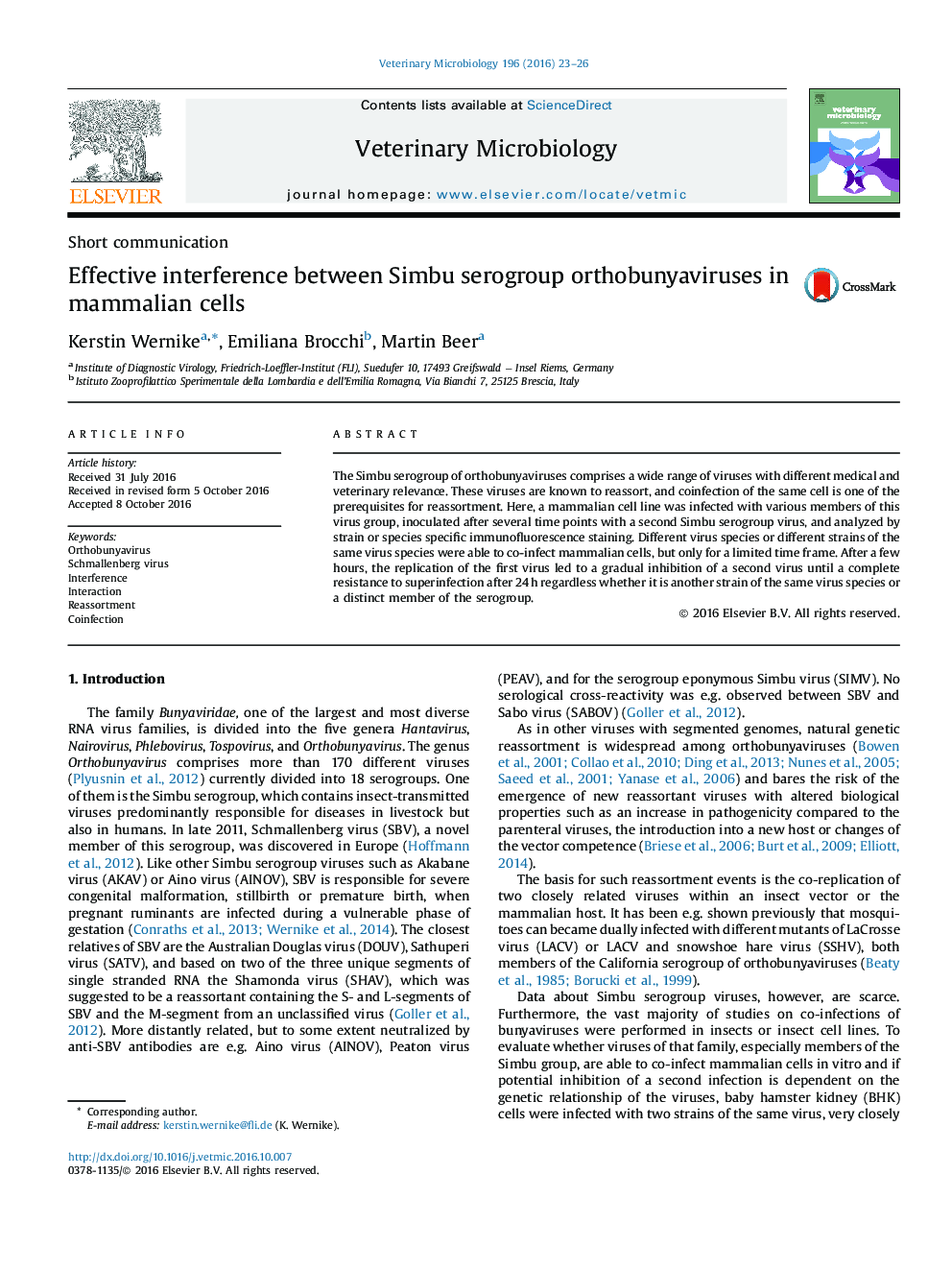| Article ID | Journal | Published Year | Pages | File Type |
|---|---|---|---|---|
| 5545486 | Veterinary Microbiology | 2016 | 4 Pages |
â¢Different Simbu serogroup viruses can co-infect mammalian cells.â¢Ability of 2 Simbu viruses to co-infect mammalian cells is restricted to a few hours.â¢Replication of the first virus led to gradual inhibition of a second one.â¢Complete resistance to superinfection with a second Simbu serogroup virus after 24 h.
The Simbu serogroup of orthobunyaviruses comprises a wide range of viruses with different medical and veterinary relevance. These viruses are known to reassort, and coinfection of the same cell is one of the prerequisites for reassortment. Here, a mammalian cell line was infected with various members of this virus group, inoculated after several time points with a second Simbu serogroup virus, and analyzed by strain or species specific immunofluorescence staining. Different virus species or different strains of the same virus species were able to co-infect mammalian cells, but only for a limited time frame. After a few hours, the replication of the first virus led to a gradual inhibition of a second virus until a complete resistance to superinfection after 24Â h regardless whether it is another strain of the same virus species or a distinct member of the serogroup.
